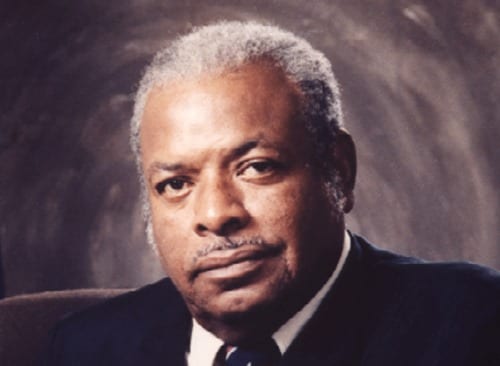Sacrifice and Service: A Closer Look at Barbados’ 10 Original National Heroes
by Karen Rollins Nov 8, 2021

Ten outstanding Barbadians were honoured with the title of National Hero in 1998 for their role in transforming our island for the better.
According to the Order of National Heroes Act, these individuals have “given outstanding service to Barbados” through “visionary and pioneering leadership, extraordinary achievement and the attainment of the highest excellence”.
Our 10 original national heroes fought for a brighter future and a country built on equality and fairness.
Bussa
Bussa, also known as Busso or Bussoe, was born in Africa. He was brought to Barbados on a slave ship and worked on Bayleys Plantation in St Philip.
Bussa was the central figure in the largest slave rebellion on the island in 1816 when he led an uprising involving thousands of enslaved people which lasted for two days. He was killed during the rebellion, but the event left an indelible mark on the island’s history.
The Emancipation Statue, affectionately known as Bussa, was created by Barbadian-based sculptor Karl Broodhagen and installed in St Michael in 1985.
Sarah Ann Gill (1795-1866)
Sarah Ann Gill is Barbados’ only female national hero. She is known as the “Heroine of Methodism and Freedom of Religion.”
Gill was a mixed-race woman (then known as coloured). In 1820, she joined the Methodist Church, even though its members were oppressed, and persecuted, and Methodist missionaries were openly attacked as anti-slavery antagonists.
Gill opened her house as a church which led to her receiving death threats and persecution in the courts for holding ‘illegal meetings’. Gill persisted, and eventually, her determination was recognised and supported by the House of Commons in England, which legislated for “ample protection and religious toleration to all… of His Majesty’s dominions.”
Gill was laid to rest on 25 February 1866 at the James Street Chapel in Bridgetown.
Samuel Jackman Prescod (1806-1871)

Born to a free coloured woman and a wealthy white landowner, Prescod was the first person of African descent to be elected to Barbados’ parliament.
Prescod was a skilled writer and initially gained attention as the editor for the island’s first newspaper for non-whites called ‘The New Times.’
After only eight months, he left that position and went to work at another paper founded by poor whites called ‘The Liberal.’ Prescod and Thomas Harris eventually bought ‘The Liberal.’
Entering politics in 1829, Prescod campaigned for free coloured people to be given the right to vote, and by 1831 this was achieved.
In 1843, Prescod claimed victory in the island’s newest constituency, the City of Bridgetown, and joined the House of Assembly. He retired from parliament in 1860 but later became a Judicial Assistant in the Court of Appeal.
Prescod died on 25 September 1871 and was buried at St. Mary’s Church in Bridgetown.
Dr Charles Duncan O’Neal (1879-1936)
Dr Charles Duncan O’Neal was born in the parish of St Lucy. He was a gifted student and went on to Harrison College where he came second in the examination for the Barbados Scholarship in 1899.
O’Neal studied medicine at Edinburgh University. He first foray into politics was in the north of England as a member of Sunderland County Council.
On his return to Barbados, O’Neal agitated for more rights for the working class and formed the ‘radical’ Democratic League political party in 1924. In 1932, O’Neal won a seat in the Barbados House of Assembly as a member for Bridgetown. He died just four years later at the age of 56.
In honour of O’Neal, Barbados’ ten-dollar note features his portrait and a bridge in Bridgetown bears his name.
Clement Osbourne Payne (1904-1941)
Clement Payne was born in Trinidad to Barbadian parents. He is a national hero in Barbados because of his efforts to galvanise the masses to demand a better standard of living and improved rights.
In June 1937, in defiance of the authorities, Payne held a rally to inform the public of labour disruptions in Trinidad. On 22 July, Payne and 300 supporters marched to the Governor’s residence, where he and 13 others were arrested.
Payne was subsequently debarred from Barbados over a previous court case where he was accused of providing false information about his place of birth.
When news of Payne’s deportation spread, his supporters abandoned his non-violent slogan, “educate, agitate but do not violate!,” and rioted for four days. The unrest left 14 people dead, 47 wounded, 500 arrested and caused millions of dollars in property damage.
A Commission of Inquiry, also known as The Moyne Commission, was set up by the British government to investigate the riots. It upheld many of the social reforms that Payne had advocated for, including the full legalisation of trade unions.
On 7 April 1941, Payne collapsed while conducting a political meeting in Trinidad. He died shortly afterwards.
Sir Grantley Herbert Adams (1898-1971)
Sir Grantley Adams was the first Premier of Barbados and the only Prime Minister of the now defunct West Indies Federation.
Sir Grantley was born in St Michael and educated at St. Giles and Harrison College. In 1918, he won a Barbados Scholarship and went to the UK to study Classics and Jurisprudence at Oxford University.
He returned to Barbados in 1925. In 1934, at the age of 36, he was elected to the House of Assembly as the member for St Joseph. He was one of the founding members of the Barbados Labour Party (then known as the Barbados Progressive League) and became the leader in 1939.
Sir Grantley also served as president of the Barbados Workers’ Union from 1941-1954.
Along with Sir Hugh Worrell Springer, Sir Grantley, oversaw several vital developmental and infrastructure changes in Barbados including the construction of the Queen Elizabeth Hospital; the introduction of the Barbados Workmen’s Compensation Act; and the Representation of the People Act, which gave all Barbadians over the age of 18, the right to vote.
Sir Grantley died on 28 November 1971 at the age of 73. He was buried at St. Michael’s Cathedral.
Rt. Hon. Errol Walton Barrow (1920-1987)

Errol Walton Barrow was the first Prime Minister of Barbados and is affectionately known on the island as the ‘father of Independence.’
Born in Nesfield, St Lucy, on 21 January 1920, Barrow was an exceptional student and won three Barbados scholarships to Combermere School, Harrison College and Codrington College. Barrow never took up the scholarship to Codrington because WWII broke out.
He travelled to Britain to volunteer for the Royal Air Force and “completed 45 bombing operations against targets in occupied Europe and Germany,” according to the RAF Museum website.
Barrow returned to Barbados in 1950 and started practicing law. In 1951, he became a member of the Barbados Labour Party (BLP), but just four years later, along with Cameron Tudor, he formed the Democratic Labour Party (DLP).
The DLP was elected to government in 1961 and Barrow served as Premier.
On 30 November 1966, Barrow became Barbados’ first Prime Minister, when he led the island to independence. He served as PM until September 1976.
In May 1986, Barrow returned to power, but died in office just a year later, at 67.
Barrow’s birthday is celebrated in Barbados as a public holiday on 21 January.
Sir Hugh Worrell Springer (1913-1994)
Sir Hugh Worrell Springer served Barbados and the Caribbean in various influential positions during his distinguished political career and academic life which spanned over 50 years.
After receiving a Barbados Scholarship in Classics from Harrison College in 1931, Springer went to Oxford University. He returned home to Barbados in 1938.
Sir Hugh helped form the Barbados Progressive League (now the Barbados Labour Party) and was the first general-secretary of the Barbados Workers’ Union from 1940-1947. In 1940, Sir Hugh was also elected to the House of Assembly as the member for St George.
In 1947, Sir Hugh left Barbados to become the registrar of the newly established University College of the West Indies in Jamaica. He retired from the University in 1963.
Sir Hugh was appointed the third governor-general of Barbados in 1984. He retired due to ill health in 1990 and died in April 1994.
Sir Frank Leslie Walcott (1916-1999)
Trade unionist and politician, Sir Frank Leslie Walcott, is a national hero because of the key role he played in organising the Barbados labour movement.
Born on 16 September 1916 in St. Peter, Sir Frank was raised in Bridgetown, where he attended Wesley Hall Boys’ School and excelled in mathematics.
Invited by Sir Hugh Springer to join the labour movement, Sir Frank soon found his calling at the Barbados Workers’ Union, and eventually succeeded Sir Hugh as general-secretary in 1948.
Sir Frank would remain a member of the Barbados Workers’ Union for 45 years.
Sir Frank became a member of parliament from 1945 to 1966 and again from 1971 to 1976. During 1966 to 1971 he served as a senator and was president of that chamber from 1986 to 1991. He was the island’s first Ambassador to the United Nations when Barbados became independent in 1966.
He also served as president of the Caribbean Congress of Labour for three separate terms between 1960 and 1980.
Sir Frank died on 24 February 1999, aged 82.
Sir Garfield St. Aubyn Sobers (1936)

Barbados’ only living national hero is West Indian cricketer Sir Garfield Sobers, also known as Sir Gary.
Born in St Michael on 28 July 1936, Sir Gary rose from humble beginnings to become the greatest all-rounder in the history of cricket.
By the age of 13, Sir Gary had been signed up to play for Kent in the Barbados Cricket League (BCL) competition. At 16 he moved on to the Police First Division team and was called to the Barbados trials for the 1952-1953 tour by India to the West Indies.
Sir Gary made his international debut for the West Indies in March 1954, aged 17, in the fifth and final test against the touring English team.
Some of his countless notable achievements on the cricket field over his 20-year professional career included scoring 365 runs (not out) when he was just 21 and hitting six sixes off every ball in an over at Lord’s in 1966.
Sir Gary retired from cricket in 1974 due to a knee injury. He was knighted by Queen Elizabeth II in 1975 for his outstanding contribution to international cricket.
A 12ft bronze statue of Sir Gary, sculpted by Karl and Virgil Broodhagen, was unveiled on National Heroes Day in Barbados in 2002. It currently stands close to the entrance of the Sir Garfield Sobers Players’ Pavilion at Kensington Oval in Bridgetown.
—
Barbados’ 10 national heroes are a shining example of service and sacrifice.
All of them have played a pivotal role in our island’s development and achievements before independence and afterwards. We owe them a debt of gratitude.
—
Yello is ‘Saluting Barbados’ 55 years of Independence’ in the 2021-2022 phone directory. Get your copy to read more informative articles.








